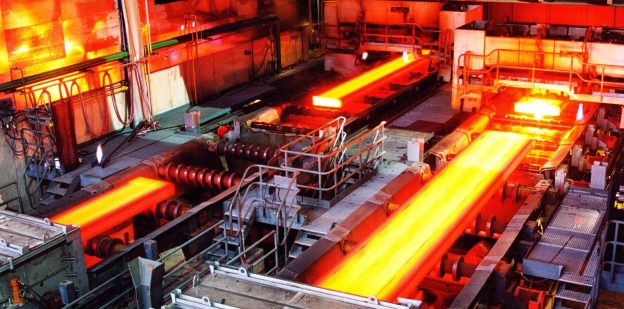The federal government finally approved retrenching 9,350 employees of the Pakistan Steel Mills (PSM). This lay-off means there is no one left from the old faces now.
However, no one knows if the removals would help achieve the objective as the decision has failed to respond to many questions as regards the revival of the mills.
The government would spend Rs20 billion in one-go on this retrenchment. Only 250 employees would stay for 120 days to complete important tasks.
The Economic Coordination Committee (ECC) of the cabinet gave a go-ahead to what government terms human resource rationalization plan for the mills employees.
The government says the decisions are in accordance with the judgments and observations of the Supreme Court of Pakistan.
Earlier, the government wanted to lay off 8,000 employees but the plan was revised and a fresh summary was carved out before it received a nod in the moot.
Now after the approval of the federal cabinet, the mills would stand 100 percent retrenched which the experts believed was one of the main obstacles before reviving the mills through a consortium.
The financial impact of the plan works out at Rs19.657bn to be released in a single tranche to pay gratuity and provident funds.
The employees will get one month salary from the approved supplementary grant on account of salaries of PSM employees. Thus, the average payment per employee comes to Rs2.3 million.
The summary of the Ministry of Industries and Production said that due to the poor financial condition of the mills, the government had been paying net monthly salaries to employees since 2013. The situation led the mills to a point where all commercial activities in the units were stopped in 2015. At that time, the mills had a strength of around 15,000 employees.
The decision of the government has surprised many experts from many respects. For instance, the people who have been informed of the issues relating to the mills and its management wonder how Rs20 billion would solve the issue as many service utilities owe millions of rupees to the mills.
An official says that not less than Rs40 billion are required as there are around 6000 ex-employees of the mills who are supposed to get their dues also.
Moreover, the mills have to pay to the Sui Southern Gas Company (SSGC), KWSB, and many other suppliers. This amount may be not less than Rs300 billion, one official claims.
But outstanding dues and payments are not the only issues to deal with. There are issues that are also linked to the land of the mills as the Sindh government has its claim also. This issue also needs to be resolved.
PSM, besides its other land properties, has a residential colony—Pakistan Steel Town—and also colonies in its vicinity.
One official says since the relevant ministry which deals with the mills falls in the ambit of Council of Common Interests (CCI) and there is a probability that this issue may come on the agenda too.
The government’s experts have completed the due diligence of the mills and reports claim there are over 13 parties interested to invest in the revival of the mills.
In sum, there are two targets, one to resolve the issues of employees and two, the revival of the mills. ‘Both are huge challenges, says an official.
Laying off around 10,000 in the times of Covid 19 would create a reaction and also with vulnerable conomies around the world, reviving the mills will emerge as a gigantic task.
The Pak-China Investment Bank had declared in 2015 that with an initial investment of $289m (about Rs29bn), provision of uninterrupted electricity supply, and new management, the PSM had the potential of becoming a profitable enterprise given its ideal location, market, and facilities.
Not only this, but the country`s largest industrial complex could also generate the funds required for expanding its production capacity to three million tonnes, the bank said and proposed a development and expansion plan with a capital investment of $288.77m in the first phase, $300.4m in the second and $296.62m in the third phase. The total investment required was $885.8m, or approximately Rs100bn.








